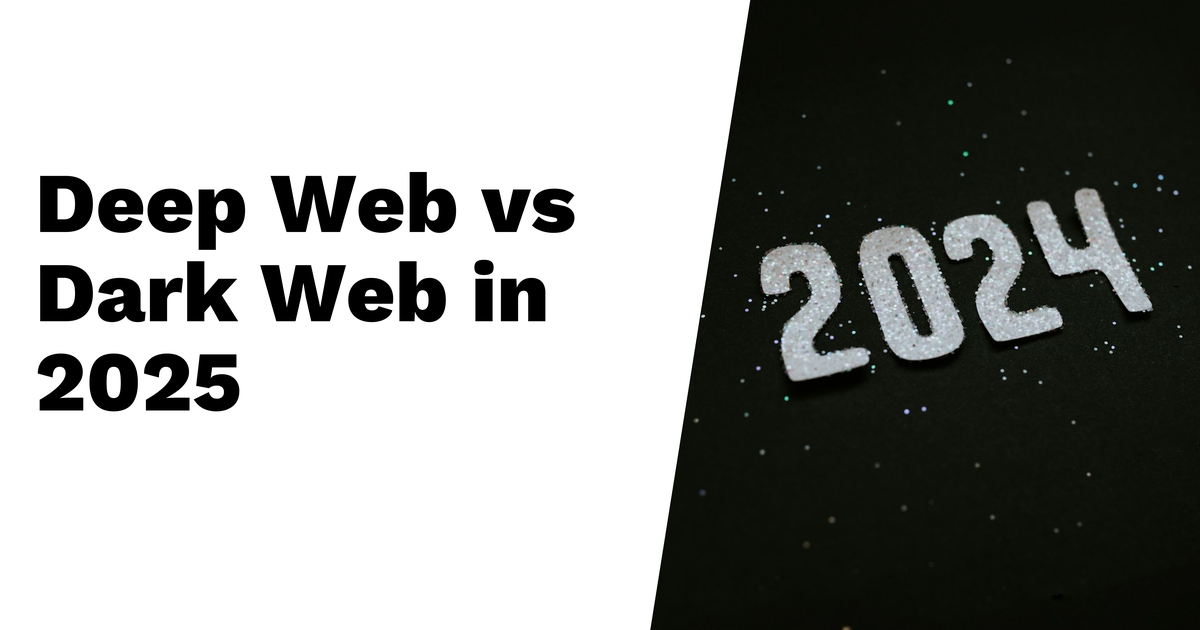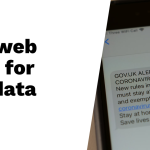The Deep Web and Dark Web, while closely related, have distinct characteristics that set them apart in 2025. The Deep Web encompasses all online content not indexed by search engines, like banking portals and subscription services, requiring login credentials for access. This vast portion of the internet represents about 90% of its total content. In contrast, the Dark Web is a hidden subset that necessitates special software such as Tor to access. Characterized by its anonymity, it often hosts illegal activities like cybercrime and drug trafficking. Understanding these differences is crucial for navigating online spaces safely and recognizing potential cybersecurity threats effectively.
Table of Contents
- Understanding the Deep Web
- Exploring the Dark Web
- Differences in Accessibility
- Indexing: Deep vs Dark Web
- Usage Patterns of Each Web
- Legal Aspects of Deep and Dark Web
- Examples of Deep Web Content
- Examples of Dark Web Content
- Risks Associated with Deep Web
- Risks of Navigating the Dark Web
- Safe Access to the Deep Web
- How to Access the Dark Web Safely
- Cybersecurity Challenges from the Dark Web
- Monitoring the Dark Web for Threats
- Frequently Asked Questions
1. Understanding the Deep Web

The Deep Web contains a vast amount of information that traditional search engines cannot access. This includes academic databases, medical records, and corporate information, all of which require specific credentials like usernames or passwords to access. Unlike the surface web, which is readily searchable, the Deep Web is estimated to be up to 500 times larger, housing data that is essential for everyday activities such as online banking and shopping. Many resources are legal and serve important functions, ensuring privacy and security, especially in sectors like healthcare and finance. While most Deep Web content remains hidden from public view, some pages can be discovered through links on indexed sites. This makes the Deep Web a critical space for managing sensitive information that should not be publicly accessible.
2. Exploring the Dark Web
The Dark Web is a unique slice of the internet, hidden from the prying eyes of standard search engines. To access it, users need special software like Tor or I2P, which anonymizes their online activity and location. This layer of anonymity is what makes the Dark Web both intriguing and risky. Websites in this domain often have .onion or .i2p endings, distinguishing them from regular internet addresses. While the Dark Web is frequently linked to illegal activities, such as the sale of drugs or stolen data, it also serves important purposes. For instance, it can be a haven for whistleblowers, political activists, and those living under oppressive regimes, allowing them to communicate freely without fear of surveillance. However, navigating this shadowy realm demands caution. Users face potential scams, malware, and exposure to illegal marketplaces. The dual nature of the Dark Web, attracting both ethical hackers and cybercriminals, creates a complex environment where privacy is prioritized but can sometimes facilitate illicit behavior. It is essential for users to remain vigilant, as the anonymity that protects them can also expose them to significant risks.
3. Differences in Accessibility
The Deep Web and Dark Web differ significantly in how they can be accessed. The Deep Web is reachable through standard web browsers like Chrome and Firefox, as long as users have the necessary login credentials. This makes it relatively straightforward for individuals to navigate sites that require authentication, such as online banking or academic databases. In contrast, accessing the Dark Web necessitates special software like the Tor browser. This software not only helps users locate hidden content but also ensures their anonymity while browsing. Unlike Deep Web sites, which often require identification to access, many Dark Web sites operate without any form of verification, contributing to their reputation for secrecy and anonymity. Safety is another key distinction; navigating the Deep Web is generally secure, while the unregulated nature of the Dark Web can expose users to various risks, including cyber threats. Moreover, content on the Deep Web is often organized and can be found through links on indexed pages, while Dark Web content is intentionally hidden and can only be accessed through specific URLs. Users may also encounter paywalls on the Deep Web, whereas access to the Dark Web is frequently free but fraught with danger. Ultimately, while the Deep Web revolves around restricted access for legitimate purposes, the Dark Web is defined by its hidden and often illicit nature.
| Aspect | Deep Web | Dark Web |
|---|---|---|
| Accessibility | Requires login or specific credentials, accessible via standard browsers (e.g., Chrome, Firefox) | Requires specialized software like Tor for access |
| Indexing | Not indexed by search engines but can be linked from indexed pages | Not indexed and intentionally hidden from search engines |
| Usage | Primarily used for legitimate business and personal services | Contains a mix of legal and illegal activities, often associated with cybercrime |
| Legality | Mostly legal content, involving personal and business data | Frequently associated with illegal activities such as drug trafficking and hacking forums |
| Examples | Bank accounts, academic research documents, and email services | Markets for illegal drugs, weapons, and stolen data |
| Risks | Generally low risk with proper access controls | Higher cybersecurity risks and threats due to the nature of activities occurring |
4. Indexing: Deep vs Dark Web
The Deep Web is largely unindexed by search engines, which means that its vast content remains hidden from platforms like Google and Bing. However, certain links from indexed pages can lead to Deep Web content, offering a glimpse of its potential value. This section of the internet includes things like online banking and subscription services, which require credentials for access. On the other hand, the Dark Web is designed to be completely unindexed and inaccessible through regular search engines. Accessing it typically requires special software, such as the Tor browser, and knowledge of specific URLs. This intentional obscurity enhances its anonymity, making it a hotspot for illicit activities.
While some Deep Web content can be uncovered if linked appropriately, the Dark Web remains elusive unless it is directly shared among users. Furthermore, Dark Web sites often change their addresses frequently, complicating any attempts to index or find them consistently. This lack of indexing contributes to the Dark Web’s reputation as a haven for illegal markets, whereas the Deep Web holds valuable resources for legitimate research and business purposes. Both webs highlight the complexities of digital privacy, emphasizing the importance of protecting sensitive information.
5. Usage Patterns of Each Web
In 2025, the usage patterns of the Deep Web and Dark Web highlight their distinct purposes and user intents. The Deep Web serves primarily legitimate needs, catering to activities like online banking, accessing subscription services, and conducting academic research. Users are drawn to the Deep Web for its convenience and security, as it allows for the safe management of personal data while facilitating everyday tasks. In contrast, the Dark Web exhibits a more varied array of usage, often tied to anonymity and unregulated activities. While some individuals leverage the Dark Web for political activism and whistleblowing, others are involved in illegal practices, such as trafficking drugs or trading stolen data. The allure of the Dark Web can stem from curiosity or a desire for anonymity, but it is also a hub for cybercriminals seeking to exploit its hidden nature. Overall, these contrasting usage patterns reflect the different motivations of users, whether they seek privacy and security on the Deep Web or the shadowy freedom of the Dark Web.
6. Legal Aspects of Deep and Dark Web

Accessing the Deep Web is generally legal since it houses information designed for specific audiences, such as databases and private networks. The legal framework governing the Deep Web mirrors that of the surface web, with a strong focus on user privacy and information security. Many organizations utilize the Deep Web to securely store sensitive data, adhering to regulations like HIPAA or GDPR. In contrast, the Dark Web exists in a gray area regarding legality; while merely accessing it is not illegal, many activities that occur there are, such as drug trafficking and the trade of stolen goods. Users can unwittingly engage in illegal activities by visiting certain Dark Web sites or forums, making it crucial to understand the potential risks. Law enforcement agencies actively monitor the Dark Web to combat cybercrime and illegal transactions, but the challenge remains in distinguishing between legitimate and unlawful activities. Legal consequences can stem from participation in illegal transactions or accessing prohibited content on the Dark Web. As such, knowledge of the law is vital for users navigating both webs to avoid potential legal pitfalls. Overall, while the Deep Web operates within established legal boundaries, the Dark Web introduces unique challenges for both users and law enforcement.
7. Examples of Deep Web Content
The Deep Web hosts a variety of content that remains largely unseen by the average internet user. This includes online databases that require subscriptions or specific institutional access, such as academic journals or library resources. Medical records are another example, as they are stored in secure health systems and are not publicly accessible. Businesses often use corporate intranets to manage internal information, making this content part of the Deep Web as well.
Private online services, like cloud storage or email accounts, require user authentication, ensuring that only authorized individuals can access their data. Banking websites are also part of this hidden layer, allowing users to manage their accounts securely. Subscription-based streaming services, such as Netflix or Hulu, provide content behind paywalls, further contributing to the Deep Web’s extensive resources.
Additionally, government databases containing public records, like court documents or property deeds, are often not indexed by search engines, rendering them part of the Deep Web. Educational resources available through academic institutions may also be restricted to students and staff, preventing public access. Research data that is not published or indexed further illustrates the wealth of information found within the Deep Web. Overall, the Deep Web is characterized by its restricted access, requiring user credentials to unlock a vast array of valuable content.
8. Examples of Dark Web Content
The Dark Web is home to a variety of content, much of which is illegal or unethical. Illicit marketplaces thrive here, allowing users to buy and sell drugs, weapons, and stolen data anonymously. Hacking forums are another prevalent feature, where individuals share information about cyber attacks, vulnerabilities, and even techniques for exploiting systems. Whistleblower platforms provide a crucial service, enabling users to share sensitive information without revealing their identities, often in the name of transparency and accountability.
In oppressive regimes, anonymous communication channels exist for activists and journalists, allowing them to communicate securely and evade government surveillance. Unfortunately, the Dark Web also harbors illegal pornography and exploitation content, which is strictly prohibited by law. Black markets for counterfeit currencies and identity theft services are common, alongside ‘hacker-for-hire’ services, where individuals can hire hackers to conduct cyber crimes.
Additionally, forums dedicated to discussing and promoting extremist ideologies or illegal activities can be found, reflecting the darker side of human nature. Cryptocurrency exchanges that operate outside traditional financial regulations further complicate the landscape, adding layers of anonymity to transactions. Overall, content on the Dark Web is marked by its potential for illegal transactions and the anonymity it provides to its users.
- Illicit marketplaces for drugs, weapons, and stolen data that operate anonymously.
- Hacking forums where individuals exchange information about cyber attacks and vulnerabilities.
- Whistleblower platforms allowing users to share sensitive information without revealing their identity.
- Anonymous communication channels for activists and journalists in oppressive regimes.
- Illegal pornography and exploitation content that is strictly prohibited by law.
- Black markets for counterfeit currencies and identity theft services.
- Services for hiring hackers to conduct cyber crimes, often referred to as ‘hacker-for-hire’ services.
- Forums for discussing and promoting extremist ideologies or illegal activities.
- Cryptocurrency exchanges that operate outside of traditional financial regulations.
- Overall, Dark Web content is marked by its anonymity and the potential for illegal transactions.
9. Risks Associated with Deep Web
While the Deep Web is generally considered safe, users need to exercise caution when sharing sensitive information online. Data breaches can happen if proper security measures are not in place, putting personal information at risk. It is crucial for users to ensure they are accessing legitimate Deep Web sites to avoid scams or phishing attempts. Using strong passwords and enabling two-factor authentication can significantly enhance the security of Deep Web accounts.
Avoiding public Wi-Fi when accessing personal data is another essential practice, as it can reduce the risk of data interception. Deep Web sites can have varying degrees of security, so being aware of a site’s reputation is important. In some cases, users might inadvertently stumble upon illegal content if they do not navigate carefully. Employing antivirus software can help protect against malware that may lurk in Deep Web content. Lastly, detecting and mitigating risks associated with outdated or unsecured systems is essential for safe browsing. Overall, while risks are minimal, being cautious is always a wise approach when navigating the Deep Web.
10. Risks of Navigating the Dark Web
Navigating the Dark Web comes with considerable risks that can endanger users in various ways. One major concern is exposure to illegal activities and harmful content. Users may inadvertently stumble upon sites dealing in drugs, weapons, or stolen data, which can lead to serious legal repercussions. Even though anonymity is a key feature of the Dark Web, it does not guarantee safety. Law enforcement agencies actively monitor many Dark Web activities, and participating in illegal actions can result in arrest and prosecution, regardless of the perceived anonymity. Furthermore, cybercriminals frequently exploit vulnerabilities, making interactions with untrustworthy sites particularly dangerous. Users might also face scams, malware, and cyber attacks if they do not exercise caution. Disturbing or violent content is common, which can be psychologically harmful and unsettling. Adding to the woes, data leaks and breaches are prevalent in this hidden part of the internet, putting personal information at significant risk. A lack of adequate security measures, such as weak passwords, can lead to compromised accounts, exposing individuals to further dangers. Compared to the Deep Web, the Dark Web presents a higher likelihood of encountering fraud or deception. Overall, engaging with the Dark Web requires extreme caution and a robust understanding of the associated risks.
11. Safe Access to the Deep Web
Accessing the Deep Web safely requires a few essential practices. First, using strong, unique passwords for your accounts helps protect your personal information. Whenever possible, enable two-factor authentication for an added layer of security. Keeping your software and operating system updated is crucial to reduce vulnerabilities that could be exploited by malicious actors. When browsing Deep Web sites, always use secure connections, like HTTPS, to encrypt your data. Avoid sharing personal information or sensitive data on these platforms, as this increases your risk of exposure. Be cautious of phishing attempts and social engineering tactics that can lead to unauthorized access. Utilizing reliable VPN services can help mask your IP address, adding another level of anonymity while you browse. Regularly monitoring your account activity is wise, as it allows you to spot any unauthorized access quickly. Staying informed about the latest cybersecurity threats related to the Deep Web is also vital for maintaining your safety. Lastly, when accessing information, always use reputable sources and databases to ensure the quality and security of the content.
12. How to Access the Dark Web Safely
To access the Dark Web safely, start by downloading and using the Tor browser, which is designed specifically for this purpose. Before you connect to the Dark Web, always ensure that you are connected to a VPN to enhance your privacy and security. Once you have the Tor browser open, it is crucial to disable JavaScript and any other plugins, as these can cause potential leaks of your identity. Be cautious and avoid downloading files from unknown sources, as they may harbor malware that could compromise your device.
Never share personal information on Dark Web forums or marketplaces, as anonymity is key, but sharing your details can expose you to risks. For any discussions or transactions, consider using encrypted communication tools to keep your conversations secure. Also, be wary of links and websites, as many may lead you to illegal content or scams designed to exploit unsuspecting users. Educate yourself about the risks and legal implications of accessing the Dark Web, as ignorance can lead to serious consequences.
For added security, you might want to use a separate device that is not linked to your personal accounts. This way, even if something goes wrong, your main accounts remain safe. Lastly, stay updated on the best practices for Dark Web safety, as threats are constantly evolving and staying informed can help protect you.
13. Cybersecurity Challenges from the Dark Web
The Dark Web presents significant cybersecurity challenges for organizations and individuals alike. It serves as a marketplace for stolen data, including personal and financial information, making it a prime target for cybercriminals. These criminals share hacking tools and techniques, which further increases the risk of attacks on unsuspecting victims. Ransomware services are frequently offered, putting organizations at risk of data breaches and financial loss. The anonymity provided by the Dark Web complicates law enforcement efforts to track and combat illegal activities, creating a safe haven for illicit operations. Phishing schemes and identity theft are rampant, leaving users vulnerable to exploitation. Additionally, if sensitive data is sold or leaked on the Dark Web, organizations face serious reputational risks. To counter these threats, dark web monitoring becomes essential, allowing organizations to identify compromised data before it can lead to breaches. Cybersecurity teams must remain vigilant and informed about emerging threats, while collaboration between private and public sectors is crucial for effectively combating cybercrime. Investing in robust cybersecurity measures is necessary to mitigate the risks presented by the Dark Web.
14. Monitoring the Dark Web for Threats
Monitoring the Dark Web is crucial for organizations looking to protect their sensitive information. By implementing dark web monitoring tools, businesses can identify stolen credentials and sensitive data before it’s too late. Setting up alerts for any mentions of your brand or critical information is essential, as it allows for swift action when potential threats arise. Regularly reviewing findings from these monitoring efforts helps organizations stay proactive and prepared against emerging risks. Engaging with cybersecurity experts who specialize in dark web intelligence can provide valuable insights and strategies tailored to specific threats. Additionally, considering threat intelligence services can illuminate patterns of activity on the dark web that may impact your organization. Training employees to recognize threats that originate from the dark web is vital, as they are often the first line of defense. Organizations should also assess and enhance their cybersecurity protocols based on the findings from dark web monitoring. Establishing a response plan for potential threats discovered in the dark web can streamline the reaction process when incidents occur. Monitoring competitor activity on the dark web can also shed light on industry risks, enabling businesses to adapt their strategies accordingly. Staying current with trends and changes in dark web activity ensures that monitoring strategies remain effective in an ever-evolving landscape.
Frequently Asked Questions
What is the deep web and why is it important?
The deep web includes all parts of the internet not indexed by search engines, like online databases and private networks. It’s important because it holds a lot of useful information that we can’t easily access through regular searches.
How does the dark web fit into the picture of the deep web?
The dark web is a small part of the deep web that requires special software, like Tor, to access. It’s known for anonymous activities, both legal and illegal, making it a unique area of the online world.
Can anyone access the dark web?
Yes, anyone can access the dark web, but they need specific tools and a basic understanding of how to navigate it safely. It’s not as straightforward as the regular web.
What safety measures should people consider when exploring the dark web?
People should use strong security practices, like VPNs and anonymity tools, avoid sharing personal information, and be cautious of illegal activities and scams present in the dark web.
Is everything on the dark web illegal?
Not everything on the dark web is illegal, but it is often associated with illegal activities. There are also legitimate uses, such as privacy-focused forums and communication channels. Users should be aware of potential risks.
TL;DR The Deep Web includes non-indexed internet content like banking and subscription services, making up about 90% of the internet. In contrast, the Dark Web is a hidden part of the Deep Web, accessed via special software like Tor, and is often linked to illegal activities. Key differences lie in accessibility, indexing, usage legality, and associated risks. While the Deep Web generally poses low cybersecurity risks, the Dark Web presents significant threats due to its association with cybercrime. Safe access to both web types is essential for individuals and organizations, emphasizing the importance of cybersecurity measures.





